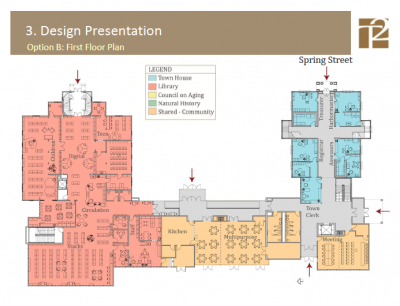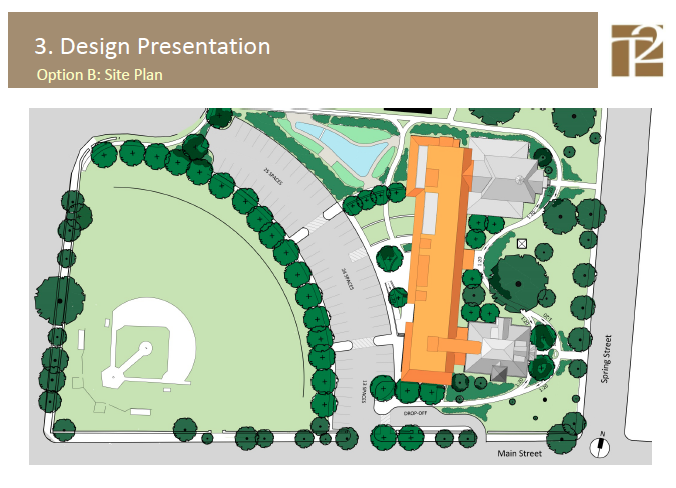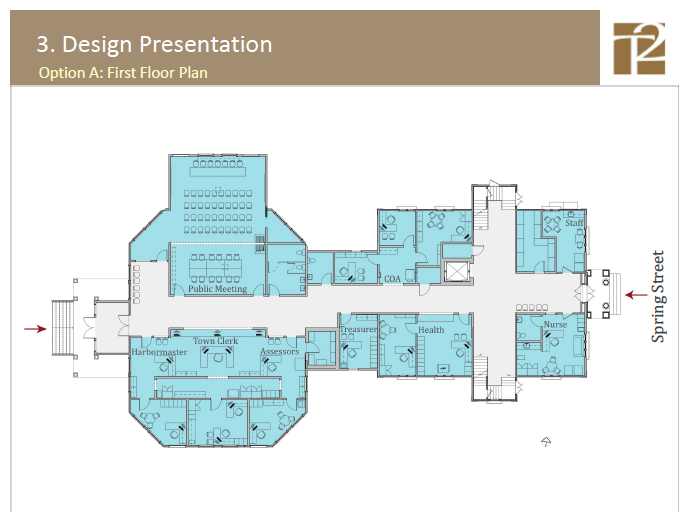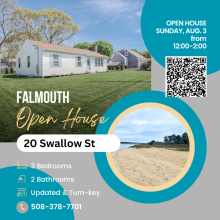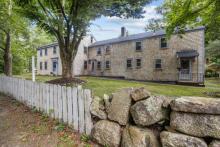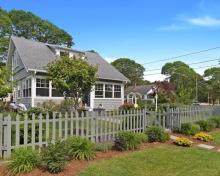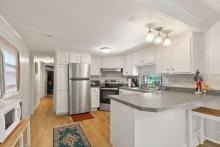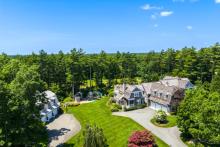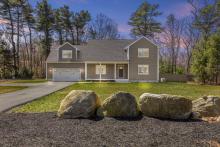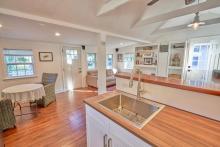Hefty price tag attached to Marion preservation project
After many polls and public forums it’s clear residents want the Town House preserved. But the question remains: At what cost?
Members of the Marion Town House Building Committee fielded questions on two very different designs that would preserve and possibly expand the seat of municipal government.
On Nov. 5, committee Chair Bob Raymond and architect Peter Turowski sought feedback from the public at a forum held in the Music Hall. Turowski's firm, the Marion-based Turowski2 Architecture, designed the plans.
While the crowd of approximately 70 overwhelmingly supported preserving the Town House, many expressed reservations about saddling taxpayers with another multi-million dollar project.
“There are a lot of projects coming down the road,” said Hamish Gravem. “It just seems to me we’re throwing a lot of money at this.”
The first option would renovate the Town House at a total cost of $12.5 million. Plans call for making the building more accessible, expanding meeting space and modernizing the interior. The Selectmen’s meeting room and town administrator’s office would be moved to the currently unused third floor.
In both plans, the building’s exterior would be preserved.
“It would be a new building with a historic cloak,” Turowski said. “Really, it would look much the same today but cleaner, newer, fresher and fully accessible.”
If that plan was approved, officials estimated the tax bill for the average $400,000 home would increase $188 each year until the project's debt is retired.
The second option is much more ambitious.
Those plans call for a $28 million project that would double the size of the Elizabeth Taber Library and link it with the Town House via a two-story Senior Center.
In the library, more computer space would be added along with an area for children and a dedicated space for teenagers. In the Senior Center, there would be a kitchen, activity rooms and Council on Aging office space. The Town House renovations would be fairly similar under the second set of plans, with a few minor tweaks.
If that plan were approved, officials estimated the tax bill for the average $400,000 home would increase $421 each year until the project's debt is retired.
When it comes to funding, Raymond said it was too soon to say what the committee would recommend.
"We have not yet tackled funding strategies yet," Raymond said. "We first need to settle on a final plan and budget."
The Town House plans join a crowded field that include mandated upgrades to the wastewater treatment plant, long gestating projects such as a Department of Public Works garage and a sorely needed repaving of County Road.
Raymond acknowledged that, taken together, those projects present a burden to taxpayers.
“We’re aware of this, but it’s not in our charter to look at that,” Raymond said. “We were told to solve the Town House problem. The town has to figure out its priorities…. The building isn’t going to fix itself.”
With either project, resident Ted North said private citizens could be solicited for funds.
“This town is loaded with private money,” North said. “If these buildings are so important to the town, it can be done with private money…This town does not have the capacity to carry out a $12 million restoration of an old building.”
Built in 1890 with donated funds from Elizabeth Taber, the Town House was the original home of Tabor Academy.
Throughout the design process, Raymond said many asked if building a new Town House, either on the same site or elsewhere, made more economic sense.
Essentially, no.
Raymond said the committee explored that option but found no suitable land. As for tearing down the building and constructing a new one, the cost would be about the same. Plus, residents want to see the Town House preserved, Raymond said.
At the forum, Raymond conducted a brief poll asking which option those in attendance preferred. Approximately 11 people favored renovating just the Town House while 20 people wanted to see the larger project. The rest of the crowd either wanted nothing done or for the committee to redraw the plans.
Raymond said the committee hopes to settle on one of the plans to be voted on at Annual Town Meeting in spring 2016.
“Our goal is to have this on the warrant with a final recommendation and input from citizens as to what plan they most likely want to see,” he said.




